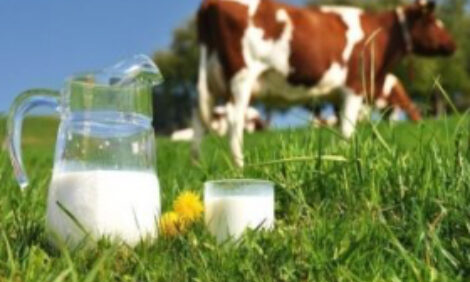



Baboons Provide Disease Solution For African Farmers
AFRICA – A major cattle disease limiting agricultural production across Africa is seeing geneticists use Baboon genetics to breed for resistance in livestock.A series of transgenic cattle models are being created in a bid to protect rural communities from Trypanosomiasis, a zoonotic vector borne condition fatal to humans and cattle.
The long term aim of the International Livestock Research Institute (ILRI) project is to create a population of resistant cattle around settlements and farmsteads from cloned calves.
Eleven embryos have been established using indigenous Kenyan Boran cattle.
Of these, one bull has made it to 15 months, with another bull calf dying in the early days of life.
ILRI staff hope the living bull, described as being in 'good condition', will carry total resistance.
Previously, resistance was successfully transferred from Baboons to mice and sheep.
Known as sleeping sickness in humans, Trypanosomiasis is spread by Tsetse flies, causing losses in young calves and headache and joint pain in humans, leading to disrupted sleep patterns.
African Trypanosomiasis costs $11.4 billion and kills 60,000 people annually.
Around 30 Glossina species flies spread the bacteria which are found almost exclusively south of the African Sahara.
The gene APOL1 contains the critical protective component Trypanosome Lytic Factor (TLF) which is present only in humans, gorillas, sooty mangabys, mandrills and Baboons.
Of the five species, Baboons are ‘remarkably resistant’ to all African trypanosomes due to Baboon TLF, specifically Baboon Apol-1.
Elsewhere, control efforts are mounting, limiting cases in 2012 to a fifty year low of 7215, according to reports from Genome Alberta.
Odour-baited traps and sterile male flies, used on the understanding females only mate once, have accompanied insecticide applications and spot treatments with good effect. Bush clearing and erasing wild animal disease reservoirs is unpopular on environmental grounds.
How Will Farmers Benefit?
Farming communities across the 10 million square mile Tsetse belt will benefit from fewer health problems and higher farm output, says the ILRI.
Experts expect crop production to increase as cattle live longer, producing more nutrient rich manure, haulage and traction benefits.
As well as higher incomes, food security prospects should improve, with cattle providing food at a different time to harvest dependent crops.
Michael Priestley
News Team - Editor
Mainly production and market stories on ruminants sector. Works closely with sustainability consultants at FAI Farms



